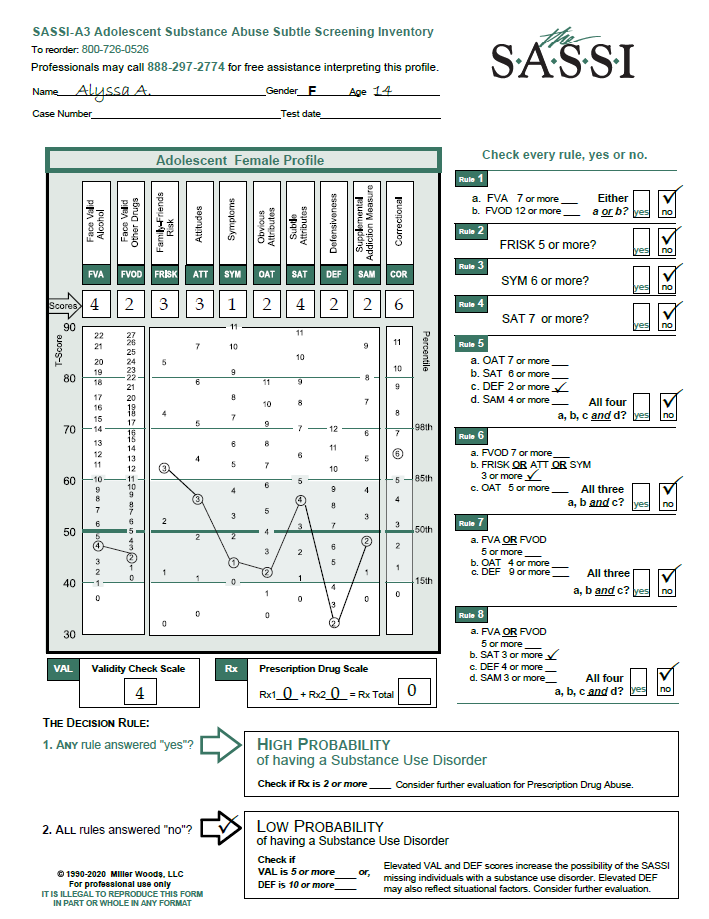We previously had a wonderful team member, Marlene K. Brooks (1940-2016), who began work at the Institute in 1993 before retiring to Florida in 2005. During that time, she assisted in the development of the Adolescent SASSI-A2 as Executive Assistant and Editor. When the 2nd iteration was released, Marlene gave a thank you to all the professionals who are involved with helping youth make positive choices and she shared the following personal story which demonstrates how teens can be role models for other teens and adults alike. We thought those of you who missed it would find value in being reminded that you do make a difference in the lives of youths through education, prevention, and early intervention.
My Granddaughter, My Role Model
My oldest grandchild, Kara, entered the 9th grade this year, her first year of high school. Kara is beautiful – inside and out – a wholesome, healthy 14-year-old, who doesn’t try to look or act older than her years. An honor student, she takes her schoolwork and other responsibilities seriously. She is praised by her teachers and has always been a source of pride to our family.
But Kara has always been something of a “home-body,” and by choice, has sheltered herself somewhat from the “real world.” Therefore, I was concerned for her this year, fearful that she may be a bit naïve and have difficulty when confronted with the types of issues that surely would arise in a large South Florida high school. None of us realized the strength of character this seemingly shy young girl possessed.
During the summer, Kara was invited to a slumber party given by a friend she liked and so accepted that particular invitation. Not long after she arrived at the party, she called her parents to come and pick her up. They didn’t question why but immediately drove over to get her. On the way home, she explained that two girls had come to the party and were smoking pot, and she promptly announced that she was leaving. She told her mom and dad that she knew everyone was going to be mad at her, but she didn’t care. The next day the girl hosting the party called and told Kara that after she had gone home, the others asked the two girls to leave. We all told her how proud we were of her for setting such a wonderful example, but that wasn’t the end. She called me one evening, and of course I asked how school was going. She said she loved it, had made all A’s and one B, and was excited to be going to her first football game the next night. And then she said, “Guess who I ran into that just started going to our school – one of the girls who was smoking pot at the party. She looked different – “nicer” – and she came up to me and told me that she wasn’t doing the things she used to do anymore, and that it was because of me! And Kara kiddingly said to her “Do you mean I’m your role model?!”
I searched what’s left of my memory, trying to think of a time when I was as courageous and outspoken among my peers about “doing the right thing” as Kara had been. I think that we as adults have become so preoccupied with being “politically correct” that we hesitate to reveal our own convictions – not that we should ever offend, but we should be able to take a stand against those behaviors that we believe in our hearts to be wrong or harmful. Kara took a stand, despite feeling that she may become “unpopular.” As it turned out, she earned not only the respect of her elders but that of her peers. Her classmates now call her “the Prude” and nominated her for Prom Queen.
What better role model could a grandmother have!
Originally published in the SASSI News & Reports Volume 9, Number 2, Dec. 2001, print edition.

